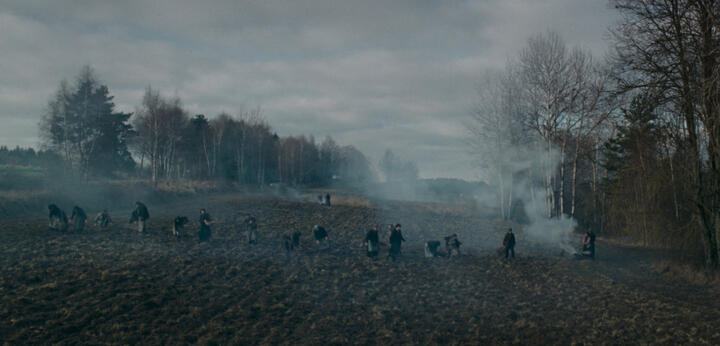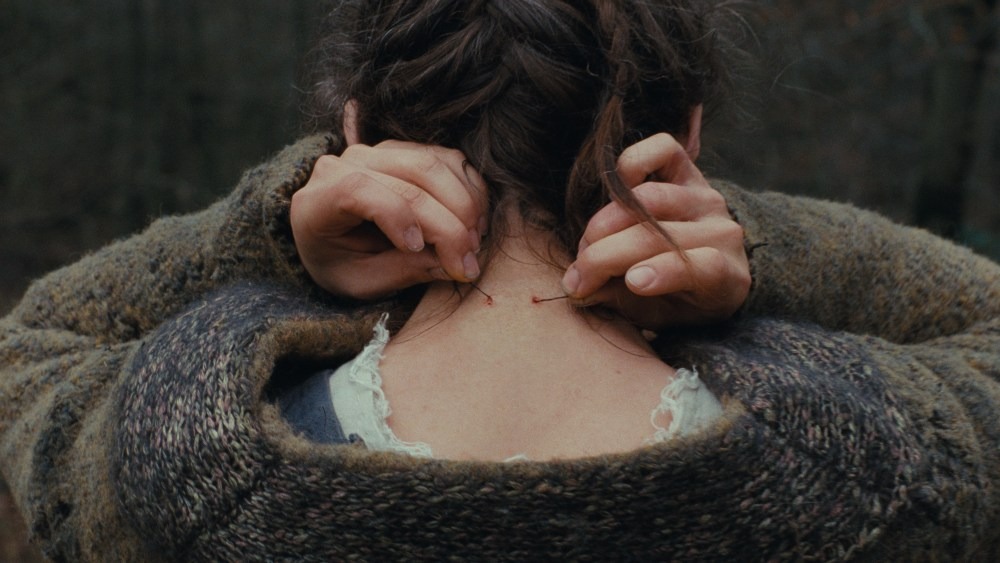Veronika Franz and Severin Fiala have already disturbed us twice with extremely uncomfortable horror films. At the Berlinale 2024, they are presenting their latest work, Des Teufels Bad (The Devil’s Bath), a small but really nasty horror film that crept into cinemas ten years ago. In Ich seh, ich seh, two brothers don’t recognize their mother when she returns from hospital after an operation. Who is the woman under the face bandage? Through the children’s eyes, we experience a nightmare that the film world has never forgotten. Even a US remake entitled Goodnight Mommy has since been released.
The Austrian directing duo Veronika Franz and Severin Fiala are behind Ich seh, ich seh. With the icy mystery-horror The Lodge, the pair delivered their English-language debut five years after their respectable success. For their new Berlinale film, the historical psychological thriller The Devil’s Bath, they return to their homeland and delve into a dark chapter of Austrian history
Horror at the Berlinale: The Devil’s Bath tells a terrifying story in 18th century Austria
Des Teufels Bad takes us back to the year 1750, to a remote region in Upper Austria where people live in poverty and fear. Everyone is a devout believer and no one dares to break out of the social conventions of the time. Work determines life – and the good Lord. However, he doesn’t seem to be too kind. First and foremost, he comes up with punishments

(Ulrich Seidl Filmproduktion Heimatfilm)
The worst thing a person can do in this world is to take their own life. Even the murderer of a baby, who we see committing the crime in the first few minutes of the movie, is given the opportunity to be redeemed in the confessional. Only then is her head cut off. Anyone who commits suicide ends up in hell – the greatest fear among the ordinary people who struggle through their dreary everyday lives.
When the devout Agnes (Anja Plaschg) gets married, it looks for a moment as if there will be a small escape from this misery. In the end, however, the exact opposite happens: The marriage becomes a prison for her, both literally and figuratively. Even the new home proves to be a stony dungeon where hardly any daylight penetrates. Here she is supposed to cook for her husband and give him a child.
But Agnes does not fit into this world. The smile of the wedding day fades. The dominance of her mother-in-law (Maria Hofstätter) gets to her, as does the passive behavior of her husband (David Scheid). Agnes loses herself in loneliness and would like to disappear from the face of the earth. It soon becomes clear where The Devil’s Bath is heading. The prologue with the infanticide sets out the path of suffering
Des Teufels Bad: Comes for the unpleasant mood and remains for Anja Plaschg’s strong performance
At this point, the horror in the face of children’s eyes can definitely be identified as the unifying motif of the horror stories that Franz and Fiala have brought to cinema in recent years. Both Ich seh, ich seh and The Lodge draw heavily on the unpleasant atmosphere that arises when the lives of innocent people are at stake and a great evil is in the offing.

(Ulrich Seidl Filmproduktion Heimatfilm)
For two hours, Franz and Fiala guide us through the forest in the guise of a bleak historical film, which proves to be a labyrinth for the characters, especially Agnes. She often wanders through the area, gets lost and arrives home too late. It is damp and cold. Leaves rustle, branches crackle and an ominous mist hangs between the trees. Nobody comes out here. The mood could hardly be more hopeless.
The Devil’s Bath thrives on its oppressive setting. The fact that the movie works is primarily due to its fantastic leading actress. Anja Plaschg is best known as a musician. Under the name Soap&Skin, she has been creating engaging sounds since the end of the 2000s. She has ventured in front of the camera with Stillleben and Die Geträumten. Now she is formulating Agnes’ suffering on the big screen.
It is not so much the obvious scenes of suffering that remain in the memory, but the grueling moments of uncertainty. Plaschg captures her character’s uncertainty with subtle gestures and glances. Sometimes it seems as if she herself disappears into the darkness of the stone house before sparse light illuminates her features. The life inside, however, fades from minute to minute.
Read more: Three-hour masterpiece with Lars Eidinger at the Berlinale
No wonder: the story on which The Devil’s Bath is based is deeply disturbing. Agnes is representative of the women who resorted to violence in the 18th century to end their lives – as murderesses whose sins are forgiven. Franz and Fiala use lonely images to trace how someone can resort to such an act of desperation. The Devil’s Bath is an extremely devastating film

